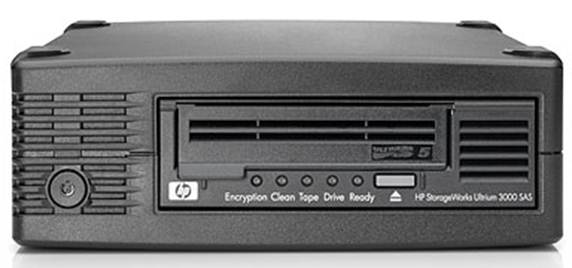Data storage for 30 years
Magnetic tapes are the traditional medium
for data storage in the professional sphere. From the point of view of the
amount of data, these formats have long been outstripped by magnetic hard
disks. The trend in the case of servers is now towards fast SSDs. In spite of
that, magnetic tape has proven its merits for long-term archiving, since a
lifetime of 30 years is considered to be secure. However this only works
conditionally since tapes often need to be replaced after few years. In
addition, storage must be under controlled condition. 30 to 40 percent humidity
and a temperature between 15 and 250C are ideal.

Current
LTO-5 drives store up to 3TB of data on their magnetic tapes
The mount of data and the storage speed
also increase with magnetic tapes. With Linear Tape Open (LTO), there is a
standard specification for tapes and drives which has been around for about ten
years, which the big manufacturers such as HP and IBM have endorsed. The LTO
group models itself on a road map which provides for a new device generation
every two years. These new devices must be compatible with devices of the
previous generation.
The latest LTO-5 tape drives work with a
transfer speed of maximum 300MBps and store up to 3TB of data. The most
important innovation is the LTFS (Linear Tape File System) file system with
which one can connect the tape drive directly to Windows and can save data from
there using simple drag and drop actions.
LTO-6 devices will be launched in the second
half of this year and are supposed to store 8TB as well as transfer data at a
maximum speed of 525MBps. With that, the tape drive will store more data than a
magnetic hard disk and its speed lies on an average in the range of the latest
consumer SSDs. If one takes these key features into consideration, the
tradition storage technology suddenly does not appear quite so old any longer.
Robust flash successor

F-RAM
is used widely in RFID chips since only a low power is required for storage
Flash cells are useful as storage medium
but there is much room for improvement. They require a lot of power and their
durability leaves a lot to be desired. From a number of proposed successor
technologies, F-RAM is prominent due to its robustness. Here, one uses materials
with ferroelectric properties such as Barium titanates for data storage. F-RAM
is used widely in RFID chips since only a low power is required for storage. In
addition, the cells can even endure strong gamma radiation. Hence it is
suitable for devices in the medial technology field which must be sterilised
regularly through radiation. It also withstands irradiation that foodstuff is
subjected to. In both scenarios, Flash memory would simple be destroyed.